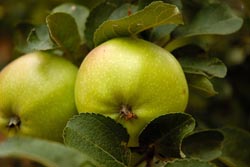Storing plants for posterity
The EC-funded CRYMCEPT project sought to establish specific cryopreservation methods for a series of plant germplasm collections. The overall aim is to assist planting projects and also preserve these plant species and examine their potential benefits in other industries such as the pharmaceutical sector. Cryopreservation refers to the long-term storage and preservation of tissues and or cells in sub-zero temperatures, ensuring the cessation of all cellular functions including cell death. Project partners German-based DSMZ developed techniques for the extraction and 2-dimensional separation of proteins. The protein molecules were derived from bananas, apples and potatoes. The aim was to investigate the protein patterns in these plant tissues, thus ensuring the highest possible efficiency of the cryopreservation step. Increasing the tolerance to cryo-treatments is very much dependent on the protein levels found in the cells and their behaviour under a variety of conditions. Studies showed a series of metabolic changes in the banana fruit attributed to a sucrose treatment prior to cryopreservation. Further studies can examine the effect of stress metabolism and investigate the potential of a less disruptive storage method.







